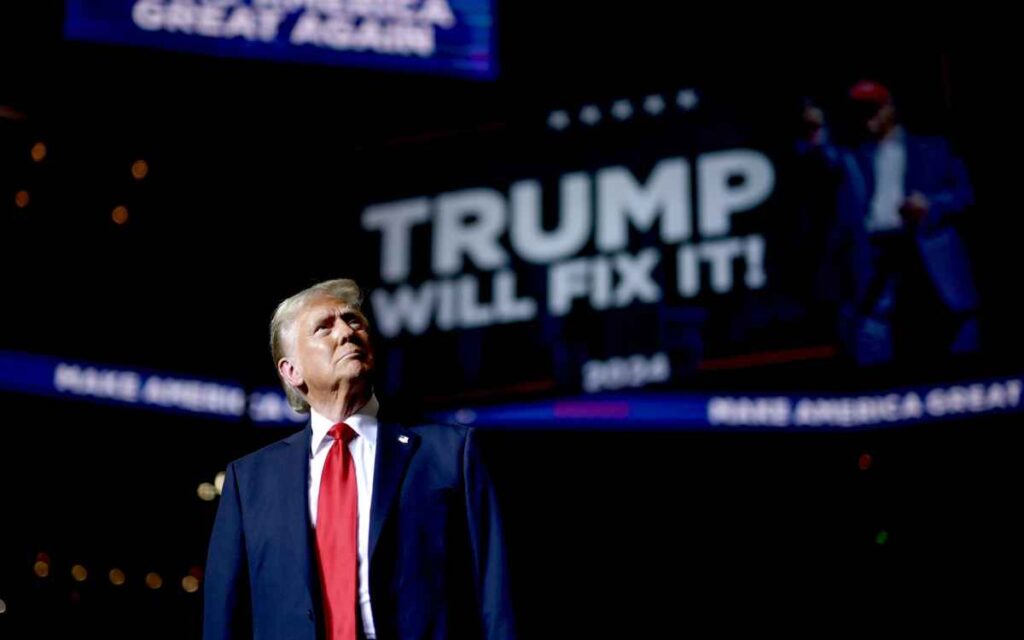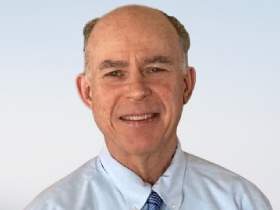
Divides in the voting public are transforming. Pictured: President-Elect Donald Trump. Photo Credit: Donald Trump/X.
Having easily won back the office he lost in the 2020 election, speculation abounds about what will happen at the dawn of the new Donald J. Trump Administration. There are a few matters being discussed and here are some worth investigating.
First, do not be surprised if discussions about pardons take place between the incoming and outgoing administrations. In exchange for pardoning President-Elect Trump, President Joe Biden can pardon his son Hunter Biden without it looking completely partisan. And while those on the left will not like it, the end of the lawfare strategy will help Democrats get past their obsession with throwing Trump in the clink. Whatever the thinking goes on that front, the time has come for Democrats to acknowledge that their efforts to bring charges, convict, and sentence Trump resulted in him earning the nomination and eventually the presidency. His victory on Tuesday stood as a testament to an amazing personal triumph over forces working against him, but it also should serve as a reminder to progressives that they and their media partners own much of what turned out to be an energized and clear rejection of Trump hysteria. Beyond that, the transition should be smooth. Biden’s professional team will cooperate with the incoming administration because he wants to be lauded for a peaceful transfer and Trump’s team has been here before.
Second, there will be a lot of rumours about who Trump will be bringing into his cabinet and administration. The quick appointment of Susie Wiles as his Chief of Staff signals a strong effort to make this period one of efficiency and exactness. Wiles, the first woman to become chief of staff, has a great reputation and will oversee the appointments and preparations with great detail. Ironically, there will be fewer diversity concerns regarding who gets jobs. Trump will not be trying to reflect America; he will emphasize merit. That probably means a lot of business people (white men) and less retired military personnel with whom Trump had relentless struggles. Look for some younger leaders to be asked to step up and take responsibility including those from non-traditional backgrounds. Trump will want to reassure Wall Street with his picks, ensure he can develop a good rapport with them, and set up a team that will cultivate a new crop of candidates for a potential Vance administration in 2028.
Third, many people want to understand what Trump’s return means. The late-night hosts, members of the View, and many in the legacy media have beclowned themselves this week with rants and suggestions that reflect the campaign rhetoric that peaked in the last two weeks. If these people do not start getting serious and look inward at what happened, they are going to dig themselves into a hole so deep that we will be looking at a Republican era that will rival the one that lasted from 1896 to 1932.
A quick browse of the results should send shivers up the backs of Democrats who hope to claim back the White House anytime soon. As an example, Vice President Kamala Harris’ campaign took in over a billion dollars and yet Trump increased his voting percentage in every state except for Washington and Utah. While the mainstream media debated whether or not Harris would win Iowa going into the election (she lost by 13 points), Trump closed the gap in state after state turning New Jersey, Virginia, Minnesota, and New Hampshire into battleground states. He cut in half the deficits in California and New York, and Illinois, next door to Ohio, could go Red in 2028 if Vice-President-Elect J.D. Vance is the nominee. And let this sink in. The Electoral College by the 2032 election will put several more electoral votes in states like Florida, Texas, and Georgia while California, New York, and Illinois will receive less. This will make the climb to 270 even harder for Democrats because people are fleeing blue states for red states where they believe life is better for average citizens. Demographics don’t lie, but if progressives are intent on pushing their agenda after this debacle, their way back to power will be long and arduous.
Fourth, the Democratic Party will need to decide on how to move forward. This author has little confidence in what they will do, especially after reading correspondence from liberal friends who are trying to digest what happened. Former president Barack Obama attempted to blame it on COVID, which resulted in inflation and a tough economy. He missed the part about a nominee who was the embodiment of San Francisco-style liberalism, something people of all stripes bear little tolerance for in great swaths of America. Will the Democratic Party send out surrogates like Pennsylvania Governor Josh Shapiro, Kentucky Governor Andy Brashear, and Pennsylvania Senator John Fetterman, or will there be more of New York Representative Alexandria Ocasio-Cortez, Vermont Senator Bernie Sanders, and Massachusetts Senator Elizabeth Warren?
Republicans dominated social media and have now taken control of podcasts. If Democrats remain stiff and committed to old practices, they are going to rely more heavily on a traditional media that does not connect with younger voters and seems completely out of touch with the working class. As an aside, don’t be surprised if Trump begins regular interviews and chats with podcasters, cutting out traditional media press conferences and avoiding his enemies in the press.
My last area of discussion veers into an area of personal observation. The divides in the voting public are transforming. Trump received the bulk of his support from those who are less formally educated and from a diverse cross-section of the population. The Democratic Party depends heavily on white college-educated people who skew left more than many traditional Democratic supporters. If the party doubles down on this left-ward move, as they did in 1972, it could produce several Republican Administrations in the decades to come. Other than a move back to the centre in 1976, Democrats nominated severely liberal candidates until finally recognizing in 1992 that a centre-left candidate held the keys to victory.
The movement of Democratic voters into the Republican Party will continue if the party of Franklin D. Roosevelt, John F. Kennedy, and Lyndon B. Johnson decides to abandon the working class. Former representative Tulsi Gabbard, Robert F. Kennedy Jr., and other prominent or former left-of-centre leaders, in both public and private life, see in Trump someone who believes in America as a land of freedom, hope, and opportunity. They do not see the racist, misogynistic, and hateful founding that progressives promote. In turning their nation into a country born out of bigotry and spite, the Democratic Party has now begun to reap what it has sown for over a decade. The more they rely on this effort to overturn the brilliance of the founders the further from power they will travel and the more transformational Trump will become to the voting public.

Dave Redekop is a retired elementary resource teacher who worked part-time at the St. Catharines Courthouse as a Registrar until being appointed Executive Director at Redeemer Bible Church in October 2023. He has worked on political campaigns since high school and attended university in South Carolina for five years, earning a Master’s in American History with a specialization in Civil Rights. Dave loves reading biographies.




















